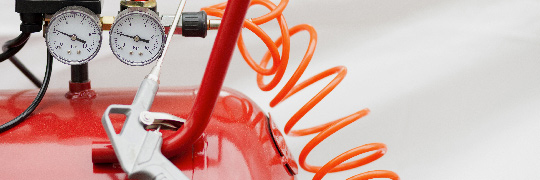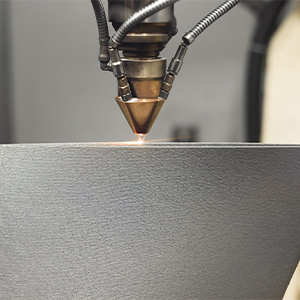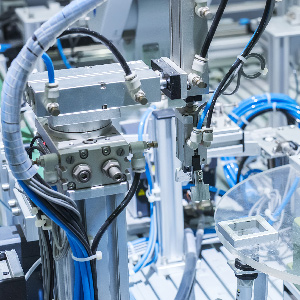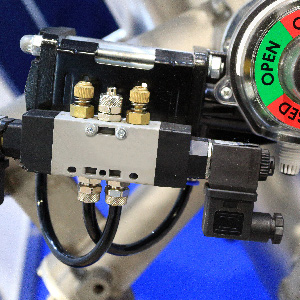How To Troubleshoot An Air Compressor
Post By: Tom Rowse On: 15-09-2020 - Pneumatics
The problems you're most likely to encounter with an air compressor fall into four general categories:

1. Electrical
Electrical problems usually start with something obvious like the compressor not starting up when you press the ON button. Check for the simplest remedies first, such as whether the power cable is still connected and the switches are all in the right position. You may also need to check and replace fuses, reset breakers, check the pressure switch, and activate a reset switch to get the machine back into power mode.
Power cables for a compressor should be plugged directly into a mains supply, not into an extension cable or power strip. These accessories are designed for domestic use. They will not supply sufficient power to the compressor for the motor to work properly, with the result that it may well overheat. If the power cable isn't long enough, move the compressor closer to a mains supply. Your motor may also overheat if the compressor is inadequately ventilated, so make sure it has enough space around it.
Have a look at the start capacitor to check for signs of burnout, and make sure it's still functioning. The start capacitor is there to cope with the inrush of power that occurs when you switch on the equipment. Incipient failure of this capacitor may sometimes be indicated by a dimming of the compressor's lights when you turn it on.
If you're repeatedly experiencing blown fuses and breakers, it could be time to replace your electric motor. An ageing motor may have loose wiring, worn windings and other general wear which will cause the motor to overheat, and circuits to short out. If your reset mechanism keeps tripping, make sure that it's properly adjusted and functioning correctly, and that the motor is sufficiently vented and not overloading. Check also that you're using the correct fuses; if the amp rating is wrong it will blow the fuses.
2. Pressure
It may be that your compressor won't fire up because it doesn't have enough air pressure to do so. Pressure problems are essentially down to two basic issues: too much or not enough. Too much pressure is less likely, but if your compressor doesn't stop when you turn it off, it may be that you have a problem with releasing the pressure in the system. This is likely to be due to a faulty pressure release or check valve, which will need to be replaced immediately. A faulty pressure switch could also contribute to an excess pressure problem or the compressor not working properly, so make sure the switch is functioning and securely connected. If the receiver pressure builds up too quickly, you might find that you have an excess of water in the tank, which you'll need to drain off.
A more common issue is having insufficient pressure for the machine either to start up at all, or to run properly. One reason for this is that the cut-in pressure required to load the air tank is not in proportion to that which is already stored in the tank. The same applies to excess cut-out pressure, so the pressure switch should be checked to make sure it's functioning properly, and adjusted to the correct levels. If the problem persists, you might consider replacing your pressure switch with one that requires a lower cut-in pressure.
Another reason for insufficient or slow build-up of pressure in the receiver may be a dirty or damaged air filter, which needs cleaning or replacing. Also check your cylinder head gasket to see whether it's blown and needs replacing, and see if your intake and discharge valves are worn out. Make sure any belts in the compressor assembly are not loose or worn, and tighten them up or replace them if necessary.
The most common reason for insufficient pressure, especially at the point of use, is leakage. You might notice that pressure drops in the compressor when it's not in use, even though the tank was fully charged – or the machine might start itself up again in an attempt to regain the requisite pressure.
To troubleshoot an air compressor leak you'll need to turn off and unplug the compressor and apply liquid soap to all the vulnerable connections, such as pipes, hoses, seals, valves, couplers and switches. If you see bubbles appearing anywhere, that's where you'll find your leak. Tighten up any loose couplers, replace seals and valve plates if necessary, and have a close look at the tank check valve to make sure it's closing completely. You might need to clean or replace this valve if pressure is still dropping when the tank is off. Alternatively, if you're only experiencing leaks when you plug a hose into the compressor, then this is probably the culprit.
Some smaller pneumatic systems experience air leaks from under the compressor hood. Try running the compressor for a short while with the hood removed, then turn it off and unplug it. Then see if you can identify any sort of air escaping by feeling around the motor parts. The most likely source of the leak will be the tank valve, which will then have to be removed, and cleaned or replaced. Your compressor may also lose pressure from leaks in the oil fill tube, which are usually due to worn piston seals. In this case, you'll need to replace the seals immediately in order to avoid internal corrosion from metal-to-metal friction.
One further problem occurs when you're not getting any pressurised air out, even when the compressor is running. This could be due to a faulty gasket or air-intake pump, either of which will need replacing.
3. Noise
Many components start to make continuous noise if they work loose, such as the flywheel, belts and belt guards, pulleys, clamps and accessories. In this case it's just a question of tightening everything up and making sure the bearings aren't worn. It could also mean realigning the floor mountings and tightening them up, or adding oil to a dry crankcase.
If excessive noise persists, you might need to repair or replace a defective crankcase. You may even need to take off the cylinder head to clean up the piston if it's knocking against the valve plate. Replace the head gasket before you reassemble the cylinder. Also check the connecting rod and its bearings for wear, as they might need replacing.
If knocking sounds only occur when the compressor is loading, the issue is slightly different. You might need to tighten the set screw on the flywheel, or tighten/replace the connecting rod and bearings. If the wrist pins and their bearings are worn, then you'll need to replace the whole piston assembly.
Sometimes the compressor just vibrates, which is also attributable to misaligned or loose components. Check and tighten the mounting bolts, belts, flywheel and pulleys, and adjust their alignment if necessary. Replace your crankshaft if it's become bent out of line, and ensure that the compressor is correctly mounted, with all four legs firm and flat to the floor.
4. Lubrication
Problems in the lubrication system include the oil supply running out too quickly, too much oil being discharged, oil in the air lines, or water in the oil. If your crankcase oil looks milky, it's because the intake air contains too much moisture. This often occurs in a humid environment, and you'll need to find a drier air source.
Using oil too quickly could be attributed to leakage, worn piston rings, or a reduced air intake caused by a dirty air filter. Your compressor may not be entirely level and therefore working at a tilt, or you may be using oil of the wrong viscosity. These are simple fixes, but you might also have to replace your cylinder if it's become scored.
If you see oil in the air lines or discharged air, you may also be using the wrong oil viscosity. Alternatively, oil may be escaping from the pump, or you might need to drain off excess oil from the compressor if it's been overfilled. If the air intake is blocked, you'll need to clean the air filter and check the other components for wear, especially seals. You might have to replace worn piston rings, or even reinstall them in the event that they've been put in upside down. Check that the crankcase breather isn't plugged up, and clean or replace it.
Knowing how to troubleshoot an air compressor will save you time and money. Many simple fixes can be identified with a regular programme of scheduled maintenance.
Get More From Rowse Straight To Your Inbox




